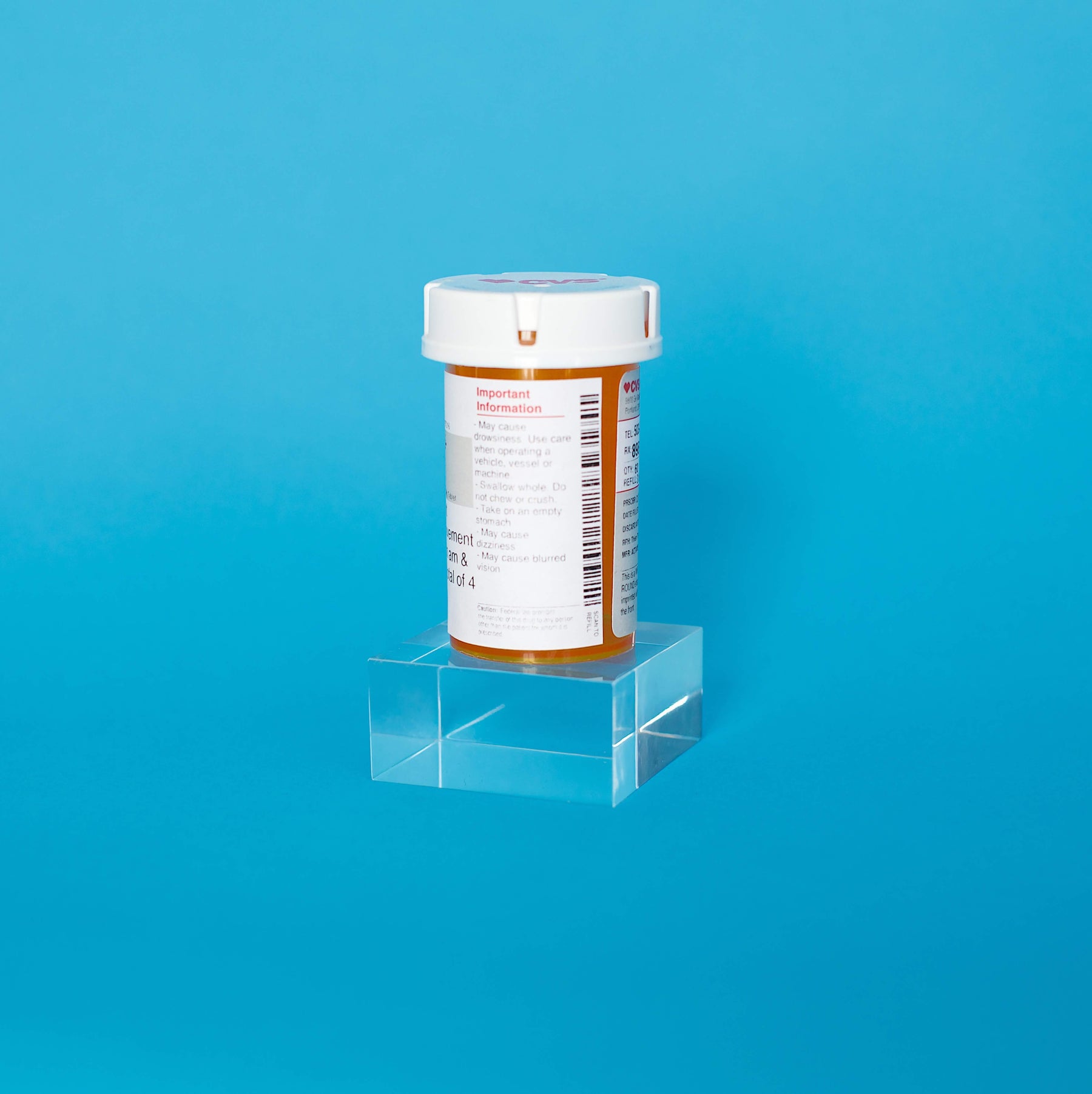Antibiotics and Gut Health : The Effects of Antibiotics on your Digestion
Key Takeaways:
- Antibiotics not only act on bacteria that cause infections but also affect the resident microbiota
- Resident microbia play crucial roles in digestion, immunity, metabolism, and mental health. They maintain the integrity of the gut mucosa and protect us from pathogens.
- Supplementing with Butyrate during and after antibiotic treatment creates an environment where good bacteria can flourish at which time probiotics can be introduced*
- Not all probiotics are created equal. A gut test like Viome can help identify optimal strains for your body
When you’re feeling ill and looking to get better, how often do you take the time to ask your doctor about the side effects of the medication they prescribed? And if you do ask, you’re most likely looking at understanding the big side effects of the medication, you know, the ones you hear listed in rapid succession at the end of drug commercials. The truth is, the one medication that we rely on, that has saved millions of lives since its discovery by Alexander Fleming in 1929, can devastate the one part of your body you don’t often think about, the gut. We’re talking about antibiotics.
Antibiotics can devastate, destroy, reduce, lay waste to and ravage the gut microbiome. It is estimated that in our gut we carry a hundred trillion microbes from more than a thousand species and more than seven thousand strains. Debatable or not, that’s a tremendous number. These microbes play crucial roles in digestion, immunity, metabolism, and mental health. They maintain the integrity of the gut mucosa and protect us from pathogens. Supporting the proper balance of bacteria and other microorganisms in your gut are imperative to your digestion as well as to your overall health and wellbeing.
How do Antibiotics Impact the Microbiome?
When the doctor prescribes an antibiotic for a diagnosed need, the gut microbiome is affected either directly or indirectly. The job of antibiotics is to deplete/neutralize pathogenic bacteria. Because their character is broad-spectrum, many/most antibiotics will indiscriminately kill subsets of commensal (meaning co-existing without harming us) bacteria. That action will change the microbiome. This is the point where the prescriber needs to weigh the benefit of the drug against the possible side effects, even those that might appear down the road. But physicians lack the time to investigate every adverse effect of every drug they prescribe. Some antibiotics reduce the activity of gut-friendly bacteria while others might reduce their numbers.
Beyond a direct effect, antibiotics can impair the microbiome indirectly by upsetting its homeostasis. Some microbiota species might play a role in the development of butyrate as a secondary characteristic, while metabolizing other nutrients as the primary. Others might protect their comrades from attack by something we eat. Depletion of commensal bacteria by antibiotics can lead to a decrease in the butyrate that is manufactured by bacterial fermentation of resistant starch. Concurrently, that may introduce gut inflammation and reduce not only the volume of butyrate, but also its capacity to clear unwanted bacterial invaders (Bhaskaran, 2018)*. Look out for dysbiosis, that microbial imbalance that now features the unwanted bacterial strains on the marquee (Lakhan, 2010)*. It’s important to find and to take measures to restrict the overuse of antibiotics, despite that some have the potential to act positively on gut biota by increasing the abundance of beneficial strains (Ianiro, 2016).
Antibiotics and Diarrhea
Antibiotics are non-selective - they kill the good with the bad, leaving the gut lacking in the bacterial strains it needs to extract water from foods and to form a solid stool. Without a body to a stool, diarrhea (which means “flowing through”) follows. Depending on diet, and especially fiber intake, not everyone gets diarrhea from an antibiotic. The course of the drug will determine the course of diarrhea, occasionally lasting a few days to a few weeks longer. For this reason, it has been advised to take a probiotic while on the drug. Consuming dairy with some antibiotics is not recommended because calcium binds with the drug and reduces uptake and efficacy. Not to seem impertinent, but the CDC announced that about thirty percent of antibiotic prescriptions are unnecessary, reminding that they have no effect on viral infections.
Can Other Medications Affect Gut Health?
Bacterial infections are not the only reason we swallow pills. Believe it or not, over-the-counter medicines are still drugs. NSAIDS (Nonsteroidal anti-inflammatory drugs) are widely used to control pain, but may induce adverse events in various body systems, most occurring in the GI tracts. NSAIDS, such as ibuprofen, aspirin and naproxen, shut off pro-inflammatory chemicals called cyclo-oxygenases (COX-1 and COX-2). The job of COX-1 is to protect gastric mucus layers and to maintain normal kidney function. COX-2 synthesizes prostaglandins that produce pain and inflammation. NSAIDS can shut down COX-1 as well as COX-2 and allow gastric distress to follow, including the stomach bleeds that affect some aspirin users.
What we especially like to learn about is the development of new COX inhibitors that deal with inflammation but do not interfere with the protection of anti-inflammatory prostaglandins. Some of these new NSAIDS contain phosphatidylcholine (PC). There are nitric-oxide-NSAIDS in the pipeline, too. These two types spare the cardiovascular system from the insults that plagued the “coxibs” that were pulled from the market for causing cardiac episodes, including heart attacks (Garcia-Tayado, 2018). As gastric insults, the NSAIDS available now harass specific strains of gut bacteria. Not only NSAIDS but also proton-pump inhibitors (Prevacid, Prilosec) modify intestinal microbiota, affecting sensory and nerve functions. Overzealous supplementation with potassium chloride may cause small bowel ulcerations and stenosis, while contraceptives are associated with intestinal ischemia (Scarpignato, 2019). Unfortunately, not many are aware of these other drug “personalities”.
Reducing levels of native microbes jeopardizes their ability to prevent invasion by harmful ones, such as C. diff and some salmonella. And if carbohydrates are not adequately broken down by indigenous strains, too much water may be absorbed and cause diarrhea, a lack of butyrate, and a misstep in the metabolism of bile acids. Additionally, tight junctions suffer adversity and allow undigested food particles to invade the bloodstream.
Restoring Your Gut Flora After Taking Antibiotics and Other Medications
If left alone after a course of antibiotics, the body may not recover in the time we think it should take. Long-term use of an antibiotic will possibly develop erosion of the glycocalyx that normally coats the microvilli. Loss of the brush border is attendant, reducing secretory IgA. The glycocalyx may be compromised by the drug or by the original infection. Either way, the outcome is the same dismal circumstance, challenging commensal bacteria to repopulate their community. In such instances, the probiotic yeast, Saccharomyces boulardii, can pave the way for Lactobacilli and Bifidobacteria to re-establish their realm. True, Saccharomyces is not a commensal entity, but it’s a potent promoter of glycocalyx production and enhanced IgA secretion. The right diet can do wonders in hastening the restoration process, being sure to minimize sugars and refined grains, like white bread and white rice. Not all probiotics are accepted by all microbiomes. There are myriad bacterial strains occupying one’s gut, so it is no surprise that all don’t get along with each other. Resolution may be expected in six weeks to six months.
Eat a Prebiotic-Rich Diet
Prebiotics are carbohydrates, such as inulin, that are nearly or completely indigestible. When consumed, they promote the growth of beneficial bacteria as food. Naturally found in fruits and vegetables, they are commonly obtained from artichokes, bananas, chicory, garlic, asparagus, leeks, dandelions, apples, barley, berries, greens, tomatoes, soybeans, flaxseeds, and onions.
Prep for Probiotics with Gut Health Supplements
Before we think of gut restoration with probiotics, we need to consider providing them a nice place to reside. That is the work of butyrate, an endogenous short-chain fatty acid of myriad talents, but famous for being the main source of energy for colonocytes, the cells that line the colon and give biota a happy place to live*. Butyrate closes tight junctions, supports a healthy inflammation response, sequesters ammonia from faulty protein metabolism and protects the gut from attack by malformed DNA*. The mucus layer is the place where the bacteria live, and more than seventy percent of it is made from PC. Once we get past thirty years of age, our capacity to make enough endogenous PC to serve our trillions of cells is limited, leaving PC supplementation a good idea*.
Head over to our gut health page to find our range of products that will help improve your digestion.
Choose the Right Probiotic for You
Do you know if you really need a probiotic? If antibiotics have been in your recent past, you likely do. If you feel well and your vitals are in range, you might not. While foods can’t always give you what you need in the way of minerals and vitamins, some can provide probiotics—sauerkraut and pickles, fermented kim chi, yogurt and kefir. Probiotics are nutraceuticals that contain live bacteria that match those in one’s gut microbiome. Their therapeutic goal is to normalize a prior disturbance. Not everyone shares a microbiome, with the possible exception of those living in the same household. That means the bacteria in your gut belong to you, and unless your probiotic is tailor-made, you could be wasting time and money. It is agreed that everyone could benefit from the species, Lactobacilli and Bifidobacteria, but some strains of those may not be ideal for you. Lactobacilli help to control bad bacteria and help the body to absorb minerals. Bifidobacteria support the immune system and help to break down some nutrients into forms we can use.
Not all probiotics are created equal - what works for you might not work for your twin. We can’t say which strains are best for you without identifying which occupy your gut. Here, your physician can help by guiding a stool test or perhaps try a test like Viome.
Consider Natural Alternatives to Antibiotics When Possible
Livestock and poultry live in such proximity to each other that they share more than food. They stand in it, they wallow in it, and they breathe it. How does the farmer in the dell protect his animals from catching each other’s sicknesses and diseases? From cattle to chickens, and probably even to farmed fish, antibiotics have been necessary evils, having resulted in tremendous increases in animal production and protection of human health. (Hume. 2011) It’s been a rare case when these drugs weren’t used. Some factory farms that swore they were antibiotic free were later found to be in violation of the truth. Primary care physicians prescribe antibiotics to satisfy their patients’ false beliefs that this class of drug will cure their common cold and remove symptoms of influenza. (Smucny. 2000) What’s wrong with this? Antibiotic resistance is the concern, an issue that develops almost too quickly for science to keep ahead of the pathogens. (Hall. 2004)
Enter the alternatives—the natural antibiotics.
For a reason not yet identified, bacteria have a tough time becoming resistant to natural substances. Maybe we shouldn’t look a gift horse in the mouth. Because they are natural, these alternative antibiotics / antivirals cannot be patented. They are dose-dependent, as well, meaning that you might need more of a substance than your twin brother or sister. The bacteria we face today are the same ones we faced in past decades, but they don’t die at the hands of the miracle drugs that worked sixty years ago. These potential killers have been found to fall at the hands of some pretty innocuous characters. Here are a few.
Goldenseal
Goldenseal, the most active compound of which is called berberine, is a supplement that reduces the ability of some streptococcus bacteria to adhere to epithelial cells, the covering of organs that compares to skin. Berberine is bactericidal and bacteriostatic, killing and preventing bacterial multiplication. (Sun. 1988) (Amin. 1969) In tests at California’s Veterans Affairs Medical Center at San Diego, staff discovered that goldenseal was able to increase antigen-specific immunoglobin (Ig) production, namely IgM, the immunoglobin that responds first to intrusion by pathogens in the bloodstream. In combination with echinacea (angustifolia), an augmentation of IgG response was noted, thus making invaders subject to destruction by macrophages. (Rehman. 1999)
Essential Oils
Essential oils and extracts from plants have been recognized as being antimicrobial for many years. They haven’t been studied extensively because there is little profit in substances that can’t be patented. Pharmaceutical companies have major dollars available for research, but not for anything that grows in your yard. In 1999, the University of Western Australia pulled out all the stops and investigated more than fifty plant oils and extracts for their efficacy as antimicrobial agents. No less than ten common bacteria strains fell prey to oils lemongrass, oregano, and bay, including E. coli, Candida albicans, Staphylococcus aureus, and two pneumonia bacteria. The remaining oils and extracts showed variable activity, but the notion of using plant oils as pharmaceutical agents was supported. (Hammer. 1999) A year later, in the UK, Scots found that “volatile oils exhibited considerable inhibitory effects against all the organisms under test…” (Dorman. 2000)
Garlic
A perpetual favorite, garlic is one of the better-known and more frequently enlisted of the antiviral compounds. One of the neatest stories about this plant is that the crooks who wandered Europe during the Black Death rampage of the 14th century survived the plague only because garlic was a mainstay of their diets. At the end of the last century it was ascertained effective against E.coli in work conducted at Hirosaki University in Japan. (Sasaki. 1999) Fresh garlic was used in those tests and in earlier American studies at Brigham Young University, where garlic thiosulfates demonstrated virucidal properties against every strain of virus tested. (Weber. 1992) Even MRSA is controllable with garlic given at twelve-hour intervals. (Tsao. 2007)
The Bottom Line on Antibiotics and Gut Health
Antibiotics, as helpful as they are to quell a bacterial assault (remember that they do not affect viruses), interact with our cells, particularly immune cells, in ways that we really don’t understand. The biochemical changes matter when the outcome is uncertain and the possibility of spawning antibiotic resistance is real. To help resurrect cells that have been denigrated by their rescuer(s), pre- and probiotics have the means.








